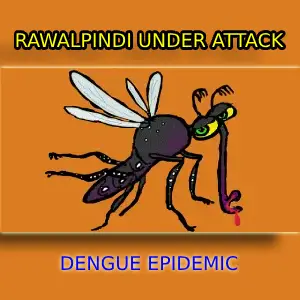New Emerging Tick-borne Wetland Virus in China
A new tick-borne virus, Wetland Virus (WELV), has been identified in China, sparking concern over its potential neurological effects and impact on public health. First detected in a 61-year-old man bitten by a tick in Inner Mongolia’s wetland park in 2019, WELV belongs to the orthonairovirus genus within the Nairoviridae family, a group of viruses known for causing severe diseases like Crimean-Congo hemorrhagic fever. As cases increase, understanding its transmission, prevention, and treatment options becomes essential.

Overview of Wetland Virus
WELV is a newly discovered virus transmitted by ticks, initially presenting with nonspecific symptoms like fever, dizziness, headaches, and muscle pain. In some cases, it leads to more serious conditions such as neurological damage, petechiae, and localized lymph node swelling. Lab studies have shown that the virus can cause multiple organ dysfunction in severe cases, as seen in the initial patient.
Transmission Mode
WELV is primarily spread by the Haemaphysalis concinna tick, commonly found in China’s wetland areas. The virus can be transmitted to humans through tick bites. Additionally, animals such as sheep, horses, pigs, and rodents can carry and spread the virus. Infected ticks may pass the virus to their offspring through the ovaries, indicating a potential for widespread transmission through tick populations.
Habitat of the Wetland Virus
Wetland Virus (WELV) is found in the wetland regions of northern China, particularly in humid environments where ticks thrive. The virus is transmitted primarily by the Haemaphysalis concinna tick, commonly present in areas with dense vegetation such as forests and grasslands. These habitats support populations of animals like sheep, horses, pigs, and rodents, which act as carriers of the virus. Wetland ecosystems, with their moist conditions, provide an ideal environment for tick survival, increasing the likelihood of human infection through tick bites in these regions.

Prevention
Preventing WELV infection largely involves avoiding tick bites, especially in regions where the virus is present. Key preventive measures include:
- Wearing protective clothing that covers exposed skin when in tick-prone areas.
- Using insect repellents with DEET or permethrin to deter ticks.
- Conducting regular tick checks on the body and clothing after spending time outdoors, especially in grassy or wooded areas.
- Promptly and carefully removing ticks if bitten, as early removal can reduce the risk of transmission.
Public health experts also recommend improving surveillance efforts to monitor the spread of WELV in tick populations and animals to better understand its reach and potential for outbreaks.
Treatment Options
Currently, there is no specific antiviral treatment for Wetland Virus. Treatment focuses on managing symptoms and preventing complications. Supportive care may include:
- Fever management with antipyretics.
- Addressing any organ dysfunction or complications with targeted therapies.
- Hospitalization for severe cases, especially those with neurological or organ-related symptoms.
Since the virus is related to other severe tick-borne illnesses, researchers are exploring whether existing treatments for similar viruses could be adapted for WELV. Early diagnosis and supportive care are critical for patient recovery.
Conclusion
Wetland Virus presents a growing threat in parts of China, with its spread facilitated by tick bites and its potential to cause serious neurological damage. By adopting preventive measures, enhancing public awareness, and improving diagnostic capabilities, health officials aim to reduce the risks posed by this emerging virus.







